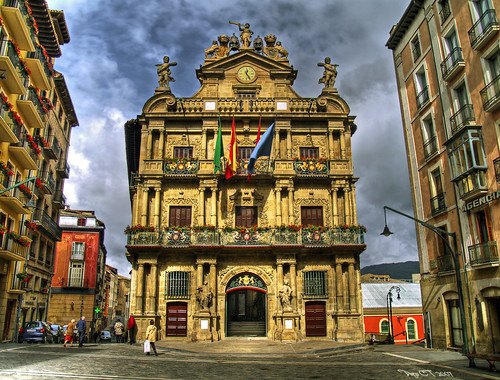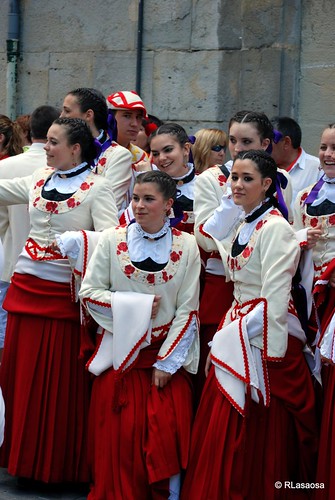
Navarre express their traditions from music and dance, where Jack is alternated with popular dances that come from yesteryear, including «makildantza» the «zortziko» the «ezpatadantza» and tallies. Other celebrations, linked to religious tradition, we invite pilgrimages to shrines and path as the popular Javierada or the Mystery of Obanos. Legends, folklore, living history, Gastronomy, traditions that have been in every corner of the old kingdom.
Holidays of Pamplona:
The San Fermin
«The Feast» of all parties, the San Fermin, have taken the name of Navarra and Pamplona all over the world. But over the year, many festivals fill the landscape of Navarre: Carnivals ancestral like Lantz, Ituren or Zubieta, processions, bullfights, and rural sports share the streets and squares. For the holidays in Navarre are not to look at are to live.
The San Fermin, is the feast of Pamplona / LRUN, held from 6 to 14 July. Ever since Ernest Hemingway fell in love with them and immortalized in 1926 in his book «Fiesta» (The Sun Also Rises), to Pamplona’s San Fermin identified with worldwide.

Of course, the San Fermin bulls are not limited to: eight days are expected throughout the year by all ages from Pamplona, where the norm is to have fun, either following or in part in any program or assembled celebration party according to their own knowledge.
The official program is sold in all newsagents and appears every day in the local press. Its strengths, unchanged, are the loud bang that begins the festivities on the 6th; sung vespers in the chapel of the saint on the same day, the procession of 7, the procession of the Eighth, 14 and from 7 through 14, the targets of pipers and Municipal Band, the enclosures and runs, the itinerary of the Giants and Kilkis, the output of the rocks of the Plaza de Toros, and fireworks at night. But above all, the street party, held by bands, groups Txistularis, passacaglia and «rocks» or gangs of youths, with their banners dance and jump in the wind unabated.
Gastronomy of Pamplona:
Cordero de la Cuenca
While the cuisine of Pamplona is enriched with all products of Navarre, we chose the lamb, being a product of traditional cuisine, very typical of the city’s markets and restaurants in all of Pamplona and its region. Not difficult, walking through the countryside, encountering herds of sheep that take herbal community of different peoples. There are many ways to eat the lamb, which of all the better.
El Relleno
A humble sausage, based on rice, eggs, onion, saffron, fresh mutton tallow, pork lard and fresh parsley. It is a popular dish made meals as an aperitif in a more informed.
Magdalena Vegetables
The gardens of the capital (such as the Magdalena neighborhood) take advantage of generous land nurtured by the small river Arga to produce delicious vegetables with which to prepare salads and light dishes that make up the strength of the main courses in the watershed, based of mutton and beef hunting … The tripicallería coveted by lovers of the popular table which is simple and true flavors.
The caramel of coffee with milk
It is a very popular sweet in Pamplona and it should take as a souvenir, these are the coffee candy. His consistency makes them lasting on the palate and a delicacy that leaves us absolutely satisfied.
Navarre is one of the regions with better indicators of quality of life in Spain. The importance of their universities, renowned for its hospital system and respect for the environment has turned into an international reference Navarra, and all that we can move his capital, Pamplona.
Discover Pamplona!
Leave a Reply
You must be logged in to post a comment.
Recent Comments